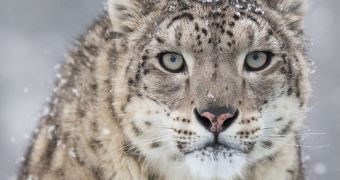Just recently, members of the Wildlife Conservation Society and a few veterinarians from Afghanistan decided to work together in order to track down and capture two male snow leopards living in this country.
Their plan was to fit the animals with satellite collars, so that they may monitor their movements and therefore come to a better understanding of this species.
This is crucial for ensuring its survival, as few snow leopards still remain in the wild, which means that future conservation projects need be as efficient as possible.
More precisely, estimates are that only 3,000 to 7,500 such big cats are still roaming mountainous areas worldwide.
As conservationists explain, the snow leopard population declined to such an extent because of an unfortunate combination of human-driven events: loss of habitat, loss of prey and illegal hunting.
Once caught, the snow leopards were also weighed and measured. Moreover, DNA and blood samples were collected, so that zoologists may draw some conclusions regarding their general health.
Preliminary reports indicate that, shortly after being fitted with the Vectronix satellite collars, the leopards traveled for more than 125 and 153 kilometers, respectively.
This goes to show that representatives of this species require vast areas of land as their hunting and breeding territories, and that all efforts to rescue snow leopards from extinction must take this aspect into consideration.
As Peter Zahler from the Wildlife Conservation Society explains, “The information garnered from the tagging will assist researchers as they learn more about the range, behavior, movements, and habitat used by snow leopards.”
He further adds, “This information in turn will help us in our partnership with the Afghan Government and local communities to design protected areas and management strategies to optimize the conservation of this big cat.”
Newswise informs us that these two snow leopards which are now intensely monitored and studied are to feature in a National Geographic series of documentaries about big cats, which is expected to go on air towards the end of this year.
Here's a video of how capturing and tagging the animals took place.

 14 DAY TRIAL //
14 DAY TRIAL // 